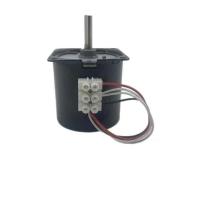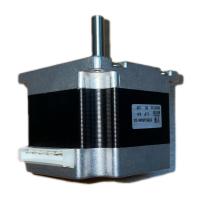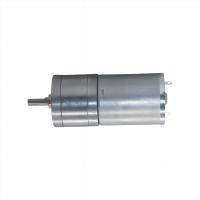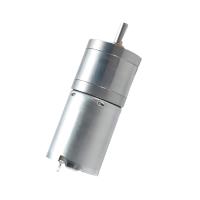| Sign In | Join Free | My himfr.com |
|
| Sign In | Join Free | My himfr.com |
|
| Ask Lasest Price | |
| Brand Name : | Go-Gold |
| Model Number : | KG-1214DC12 |
| Certification : | ISO |
| Price : | Negotiation |
| Payment Terms : | L/C, T/T, Paypal |
| Delivery Time : | 7days for samples |
Motor Details
Warranty: 3Years
Place of Origin: Guangdong, China
Brand Name: Go-Gold
Model Number: KG-1214DC12
Usage: Electric Curtains
Current(A): 0.35A
Product Name: Electric Curtains Motor DC Motor
Motor type: DC Motor
Certification: ISO
Rated Voltage: 12V/ Customized
Keywords: Electric Curtains Motor
Noise: Low
Lead Time
| Quantity(pcs) | 1-1000 | 1001-10000 | >10000 |
| Lead Time(days) | 15 | 30 | To be negotiation |
Performance Specifications
| Rated Voltage | DC12V | Weight | 50g |
| Max Efficiency Current | 0.35A | Insulation Class | E |
Dimension

Motor Picture
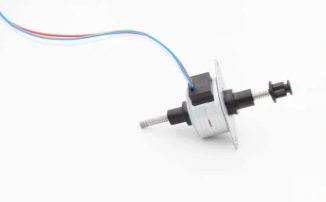
Motor Application

Composition and Structure of DC Motor
The structure of DC motor should be composed of two parts: stator
and rotor. The stationary part of DC motor is called stator. Its
main function is to generate magnetic field. It is composed of
base, main magnetic pole, commutation pole, end cover, bearing and
brush device. The rotating part is called rotor. Its main function
is to generate electromagnetic torque and induced electromotive
force. It is the hub of energy conversion of DC motor, so it is
usually called armature. It is composed of rotating shaft, armature
core, armature winding, commutator and fan.
Stator
(1) Main magnetic pole
The function of main magnetic pole is to generate air gap magnetic
field. Main magnetic pole is composed of main magnetic pole core
and excitation winding. The core is generally made of 0.5mm~1.5mm
thick silicon steel sheet punching and riveting. It is divided into
pole body and pole shoe. The part with excitation winding on the
top is called pole body, and the part with widening on the bottom
is called pole shoe. Pole shoe is wider than pole body, which can
adjust the distribution of magnetic field in air gap and facilitate
the fixing of excitation winding. The excitation winding is wound
with insulated copper wire and is mounted on the main pole core.
The entire main pole is fixed to the base with screws.
(2) Commutation pole
The function of the commutation pole is to improve commutation and
reduce the commutation sparks that may be generated between the
brush and the commutator when the motor is running. It is generally
installed between two adjacent main poles and consists of a
commutation pole core and a commutation pole winding. The
commutation pole winding is wound with insulated wire and is
mounted on the commutation pole core. The number of commutation
poles is equal to the main poles.
(3) Base
The outer shell of the motor stator is called the base. The base
has two functions:
One is to fix the main poles, commutation poles and end covers, and
to support and fix the entire motor;
The other is that the base itself is also part of the magnetic
circuit, which constitutes the magnetic path between the poles. The
part through which the magnetic flux passes is called the yoke. In
order to ensure that the base has sufficient mechanical strength
and good magnetic conductivity, it is generally a cast steel part
or welded from steel plates.
(4) Brush device
The brush device is used to introduce or extract DC voltage and DC
current. The brush device consists of a brush, a brush holder, a
brush rod and a brush rod seat. The brush is placed in the brush
holder and compressed by a spring to ensure good sliding contact
between the brush and the commutator. The brush holder is fixed to
the brush rod, and the brush rod is installed on the annular brush
rod seat. They must be insulated from each other. The brush rod
seat is installed on the end cover or the inner cover of the
bearing. The circumferential position can be adjusted and fixed
after adjustment.
Rotor
(1) Armature core
The armature core is the main part of the main magnetic circuit and
is also used to embed the armature winding. Generally, the armature
core is made of 0.5mm thick silicon steel sheets punched and
stacked to reduce the eddy current loss and hysteresis loss
generated in the armature core when the motor is running. The
stacked core is fixed on the shaft or rotor bracket. The outer
circle of the core is opened with armature slots, and the armature
winding is embedded in the slots.
(2) Armature winding
The function of the armature winding is to generate electromagnetic
torque and induced electromotive force. It is a key component for
DC motors to convert energy, so it is called armature. It is
composed of many coils (hereinafter referred to as components)
connected according to a certain rule. The coils are wound with
high-strength enameled wire or glass-wrapped flat copper wire. The
coil edges of different coils are divided into upper and lower
layers and embedded in the armature slots. The coils and the core
and the upper and lower layers of coil edges must be properly
insulated. To prevent the centrifugal force from throwing the coil
edges out of the slot, the slot is fixed with a slot wedge. The end
of the coil extending out of the slot is tied with a thermosetting
non-weft glass tape.
(3) Commutator
In a DC motor, the commutator is equipped with brushes, which can
convert the external DC power supply into alternating current in
the armature coil, so that the direction of the electromagnetic
torque remains constant; in a DC generator, the commutator is
equipped with brushes, which can convert the alternating
electromotive force induced in the armature coil into DC
electromotive force drawn from the positive and negative brushes.
The commutator is a cylinder composed of many commutator segments,
and the commutator segments are insulated with mica sheets.
(4) Rotating shaft
The rotating shaft supports the rotation of the rotor and needs to
have a certain mechanical strength and rigidity. It is usually made
of round steel.

|
